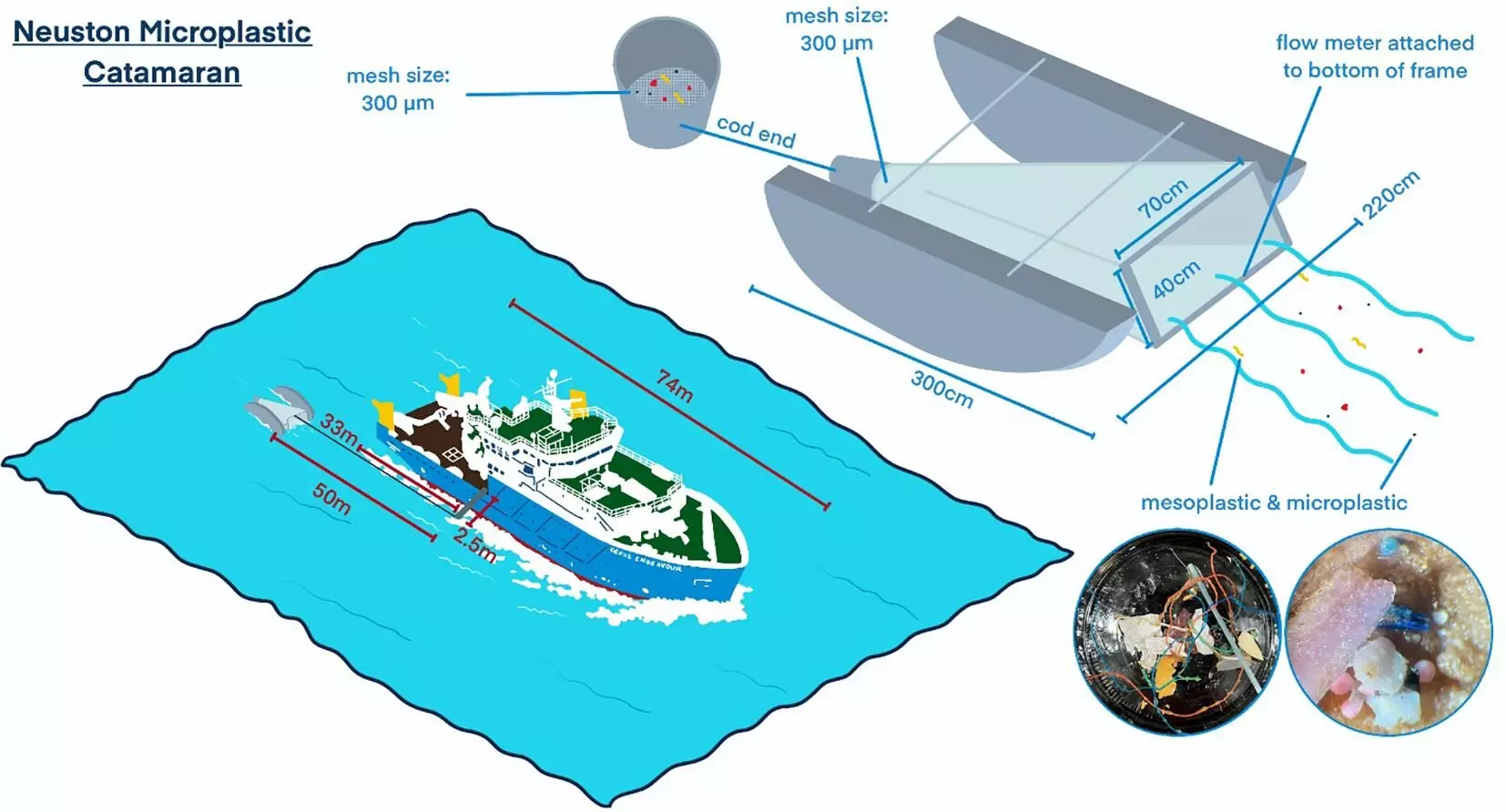Microplastic pollution has become a pressing environmental concern, capturing public attention through striking imagery of marine life entangled in debris or small plastic particles nestled among the sands of some of the world’s most picturesque beaches. While the visible remnants of plastic floating on ocean surfaces are alarming, they represent only a fraction of the total plastic entering our oceans each year. Current estimates suggest that annual input may reach up to 12.7 million tons, primarily from human activities such as river runoff, fishing, shipping, and aquaculture. Despite the staggering volumes of plastic being discharged, the concentrations detected on the ocean surface often fail to align with the expected influx, indicating a need for deeper investigation into the less visible realms of marine pollution.
Recent research led by Dr. Danja Hoehn and colleagues from the Center for Environment, Fisheries and Aquaculture Science in the U.K. has brought attention to the North Sea, revealing it as a significant microplastic sink. Utilizing a specialized vessel known as the Neuston Microplastic Catamaran, the researchers conducted meticulous surveys in 2022 to capture microplastic data from the ocean surface. This device allows for the precise collection of microplastics, which primarily flow into the ocean from terrestrial sources such as rivers or directly from vessels before sinking to the ocean floor.
The results were eye-opening: concentrations of microplastics in the Southern Bight of the North Sea reached alarming levels, peaking at over 25,000 items per square kilometer. Comparisons with nearby offshore Scottish and north-east Atlantic waters showed distinct variations, with means of around 4,500 items km-2 and 3,200 items km-2, respectively. This discrepancy underscores the unique challenges faced by specific regions in managing plastic pollution.
Upon analyzing the composition of the microplastics collected, the researchers identified that most of the material comprised polyethylene, polypropylene, and polystyrene. These types of plastics are commonly found in everyday items, such as shopping bags, food packaging, and children’s toys. Significantly, the study highlighted the persistence of microbeads, which, despite being banned in the U.K. since 2018, still appear in the marine environment. This persistence indicates a potential transfer of pollution from other nations and adds to the complexity of addressing this issue.
The presence of other plastic sizes, namely mesoplastics (5 to 25 mm) and macroplastics (over 25 mm), was noted but in significantly lower concentrations, with estimates around 2,000 items km-2 and 1,000 items km-2, respectively. These particles also primarily derive from the degradation of larger plastics, demonstrating the cyclical nature of plastic pollution in marine ecosystems.
The study identified notable hotspots off the coast of East Anglia where microplastic concentrations reached their maximum. This reveals how ocean currents can transport litter across vast distances, accumulatively depositing significant amounts of microplastics in certain regions. Despite the alarming findings, researchers noted that concentrations in the North Sea still lag behind those documented in other global hotspots; for instance, past studies reported concentrations as high as 1 million items km-2 in the Canary Islands.
The overall data from this research serves as a striking reminder of the omnipresence of microplastic pollution in marine environments. It stresses the need for comprehensive strategies to tackle this pervasive crisis.
In light of the rising plastic pollution crisis, various national and international campaigns are underway to mitigate marine litter impacts. The U.K.’s Marine Strategy aims to develop indicators to trace microplastics in marine sediments, while the North-East Atlantic Environmental Strategy is focused on reducing inputs of pollution. A notable initiative spearheaded by the UN Environmental Agency envisions a legally binding agreement to eradicate plastic pollution by 2040.
With global plastic production now exceeding 400 million tons per year, understanding and addressing marine plastic contamination is essential. Ongoing research and collaborative policies will be crucial in reversing the tide of plastic pollution, ultimately ensuring the health of our oceans for future generations. Through concerted action, we can hope to not only identify microplastic sinks but also find viable pathways to eliminate this environmental scourge.

